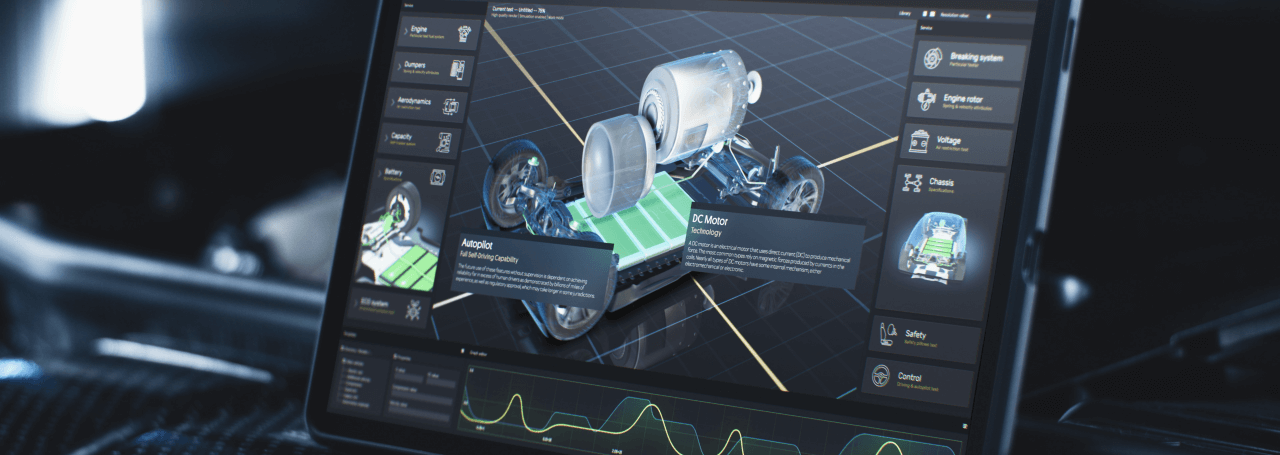TFT displays are everywhere: in smartphones, industrial control panels, medical monitors, and even vending machines. As one of the most widely used flat-panel technologies, TFT LCDs offer a compelling mix of performance, cost-efficiency, and versatility. But what exactly does “TFT” mean, and how does this technology work at the component level?
In this article, we explore the fundamental principles behind TFT displays, discuss their strengths and weaknesses, and look at how they are used across different industries. Whether you’re an engineer designing a new embedded system or simply trying to understand the terminology behind display specs, this guide will help you make informed decisions about when and how to use TFT technology.
What is a TFT display?
TFT stands for Thin Film Transistor, a type of active matrix display technology used in liquid crystal displays (LCDs). Each pixel on a TFT screen is paired with a dedicated transistor and capacitor, allowing precise control of pixel activation. This structure provides faster response times, more stable images, and sharper visuals compared to passive matrix displays.
TFT is not a standalone display format but a key component within the broader LCD architecture. The liquid crystal layer modulates light from the backlight, while the thin-film transistors act as individual switches for each subpixel. Because of this fine control, TFT displays can deliver high resolutions and color depths while maintaining power efficiency.
Modern TFT displays are often paired with technologies like IPS (In-Plane Switching) or VA (Vertical Alignment) to improve contrast, viewing angles, or color fidelity. At Riverdi, TFT-based modules are available with various enhancements such as high brightness, touch interface integration, and extended temperature tolerance—making them highly adaptable for industrial, automotive, and medical use cases.
How does TFT technology work?
At the heart of every TFT display is a grid of pixels, each composed of three subpixels—red, green, and blue—controlled by its own thin-film transistor. These transistors are deposited as a thin semiconductor layer on a glass substrate, creating an active matrix that allows each pixel to be addressed individually.
When voltage is applied to a specific transistor, it alters the alignment of the liquid crystals in that subpixel, controlling how much light from the backlight passes through the color filter above. By adjusting the voltage sent to each subpixel, the display can produce a full range of colors and gray levels with high precision.
Because each pixel has its own dedicated transistor, TFT displays avoid the latency and ghosting effects seen in passive matrix designs. They also support faster refresh rates, more stable images, and finer control over brightness and color.
To further enhance performance, modern TFT displays often integrate additional technologies such as:
- IPS (In-Plane Switching) for improved color consistency and wider viewing angles
- High-brightness backlights for readability in outdoor or industrial environments
- Touchscreen overlays, both resistive and capacitive, for interactive interfaces
Key features of TFT displays
TFT LCDs combine technical sophistication with adaptability. Here are some of the defining characteristics that make them suitable for embedded and professional applications:
- Pixel-level control:
Each subpixel is driven by its own transistor, enabling sharp and responsive image rendering. - Compact form factors:
TFT panels are available in a wide range of sizes and resolutions, from small HMIs to large industrial monitors. - Fast response times:
Ideal for real-time monitoring and user interaction with minimal lag. - Power efficiency:
Especially when combined with LED backlighting and optimized drivers. - Long-term availability:
Essential for embedded and industrial systems that require consistent sourcing and extended product lifecycles.
Riverdi’s TFT modules are engineered with these priorities in mind—combining reliable hardware with modern optical performance to meet the needs of today’s complex applications.
Types of TFT LCD Technology
While all TFT displays share a common active matrix structure, the way the liquid crystals are aligned and manipulated can vary. This gives rise to several types of TFT LCD technologies, each with distinct visual characteristics and performance profiles.
- TN (Twisted Nematic):
One of the earliest and most cost-effective TFT variants. TN displays offer fast response times but suffer from narrow viewing angles and limited color reproduction. Suitable for budget-sensitive or single-user applications. - IPS (In-Plane Switching):
Liquid crystals rotate in-plane, allowing for superior viewing angles and excellent color consistency. IPS is ideal for applications requiring accurate visual feedback and multi-angle readability. - VA (Vertical Alignment):
Liquid crystals align vertically when inactive and tilt to let light through when voltage is applied. VA panels provide better contrast than TN, with wider viewing angles—but still fall short of IPS in color accuracy.
Riverdi primarily uses IPS-enhanced TFT displays in its modules, due to their optimal balance between image quality, durability, and industrial performance.
Advantages of TFT Displays
TFT LCDs offer several compelling advantages that make them the display technology of choice in many industrial and embedded scenarios.
| Feature | Description |
| High-resolution output | The active matrix design supports dense pixel arrangements, enabling sharp graphics and text. |
| Fast image response | Suitable for dynamic content, real-time monitoring, and interactive systems. |
| Stable and flicker-free image | Each pixel remains actively powered during refresh cycles for consistent display quality. |
| Modular adaptability | Can be integrated with touch interfaces, optical bonding, and brightness enhancements. |
| Long lifecycle and availability | Essential for OEMs and system designers relying on long-term continuity in sourcing. |
Disadvantages and limitations of TFT Displays
Despite their many strengths, TFT displays do come with some trade-offs that should be considered during system design. The most common limitation is related to viewing angles and color shift, particularly in basic TN-based panels. Without enhancements like IPS, visuals can appear washed out or distorted when viewed off-center.
Another consideration is power consumption. Although generally efficient, TFTs require continuous power to maintain an image, which can be a pitfall in battery-powered devices or low-energy environments.
Additionally, backlight bleeding and uniformity issues may occur in lower-quality panels, affecting image consistency. Designers should also account for integration complexity when adding touch layers, optical bonding, or EMI protection—features often necessary in industrial or medical-grade systems.
Factors to consider when choosing a TFT display
Selecting the right TFT panel means evaluating not just resolution or price, but a combination of parameters that match the operational context:
| Consideration | Why it matters |
| Display size and resolution | Must fit the mechanical design and match the visual requirements of the interface. |
| Viewing angle technology | IPS technology improves user visibility in multi-angle or public environments. |
| Brightness and contrast | Critical for readability in outdoor, industrial, or high-ambient light conditions. |
| Touch interface | Consider PCAP or resistive solutions depending on glove usage, precision, or environmental exposure. |
| Operating temperature range | Ensures stability and safety in automotive, outdoor, or factory-floor conditions. |
| Longevity and availability | Key for embedded systems that require long-term support and product consistency. |
Ready to choose the right TFT display for your project?
Or still weighing your options? Our team is here to help.
Talk to a Riverdi engineer and get well-suited support for your embedded, industrial, or medical application.
Explore our full range of advanced TFT display modules, including IPS-enhanced and touch-integrated options
DISCOVER OUR
Whitepaper
Achieve the perfect user-display interaction with the right Touch Sensor IC. Ever faced issues with phantom touch events or certification? Boost your R&D like a pro with our Whitepaper!



